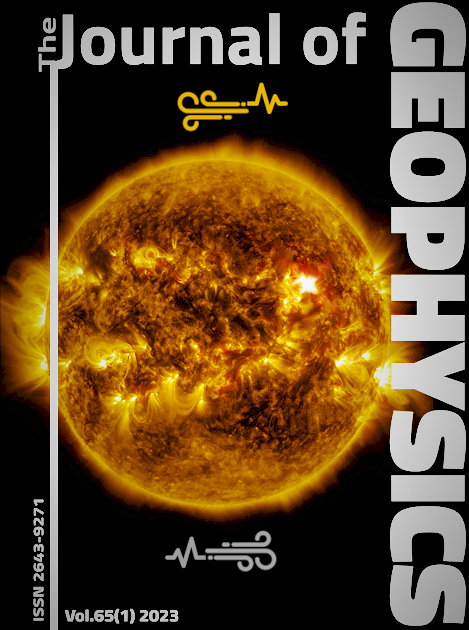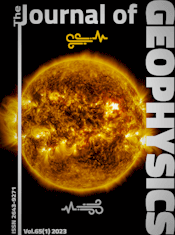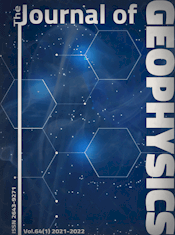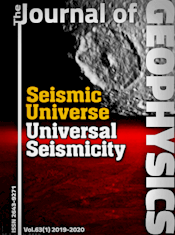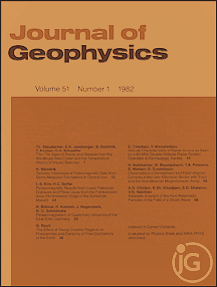Global coupling mechanism of Sun resonant forcing of Mars, Moon, and Earth seismicity
How stars drive seismicity on planets and moons
Article Sidebar
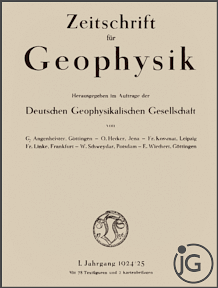
Vols. 1-18 (1924-1944), ISSN 0044-2801
Main Article Content
Abstract
Global seismicity on all three solar system bodies with in situ measurements (Earth, Moon, and Mars) is mainly due to the mechanical Rieger resonance (RR) of macroscopic flapping of the solar wind, driven by the well-known PRg=~154-day Rieger period and commonly detected in most heliophysical data types and the interplanetary magnetic field (IMF). Thus, InSight mission marsquakes rates are periodic with PRg as characterized by a very high (≫12) fidelity Φ=2.8·106 and by being the only ≥99%-significant spectral peak in the 385.8–64.3-nHz (1–180-day) band of highest planetary energies; the longest-span (v.9) release of raw data revealed the entire RR, excluding a tectonically active Mars. To check this, I analyzed the rates of the October 2015–February 2019, Mw5.6+ earthquakes, and all (1969–1977) Apollo program moonquakes. To decouple the magnetospheric and IMF effects, I analyzed the Earth and Moon seismicity during the traversals of the Earth’s magnetotail vs. IMF. The analysis showed with ≥99–67% confidence and Φ≫12 fidelity that (an unspecified majority of) moonquakes and Mw5.6+ earthquakes also recur at RR periods. Approximately half of the spectral peaks split but also into clusters that average into the usual Rieger periodicities, where magnetotail reconnecting clears the signal. Moonquakes are mostly forced at times of solar-wind resonance and not just during tides, as previously and simplistically believed. There is no significant dependence of sun-driven seismicity recurrence on solar cycles. Earlier claims that solar plasma dynamics could be seismogenic due to electrical surging or magnetohydrodynamic interactions between magnetically trapped plasma and water molecules embedded within solid matter or for reasons unknown are corroborated. This first conclusive recovery of the global coupling mechanism of solar-planetary seismogenesis calls for a reinterpretation of the seismicity phenomenon and reliance on global seismic magnitude scales. The predictability of solar-wind macroscopic dynamics is now within reach, which paves the way for long-term, physics-based seismic and space weather prediction and the safety of space missions. Gauss–Vaníček Spectral Analysis revolutionizes geophysics by computing nonlinear global dynamics directly (renders approximating of dynamics obsolete).
 ARK: https://n2t.net/ark:/88439/x040901
ARK: https://n2t.net/ark:/88439/x040901
Permalink: https://geophysicsjournal.com/article/321

News Feature (2023) Scientists now know that (and how) the Sun paces strong quakes — and not just on Earth. J. Geophys. 65(1):47

The Sun as a revolving-field magnetic alternator with a wobbling-core rotator from real data. J. Geophys. 65(1):48-77
 Read the press release for this article
Read the press release for this article
Article Details
References
Alfvén, H. (1942) Existence of electromagnetic-hydrodynamic waves. Nature 150(3805):405–406. https://doi.org/10.1038%2F150405d0
Bai, T. (2003) Hot Spots for Solar Flares Persisting for Decades: Longitude Distributions of Flares of Cycles 19–23. Astrophys. J. 585:1114-1123. https://dx.doi.org/10.1086/346152
Bai T. and Cliver E. W. (1990) A 154 day periodicity in the occurrence rate of proton flares. Astrophys. J. 363:299–309. https://doi.org/10.1086/169342
Banerdt, W.B., Smrekar, S.E., Banfield, D. et al. (2020) Initial results from the InSight mission on Mars. Nat. Geosci. 13:183–189. https://doi.org/10.1038/s41561-020-0544-y
Bulow, R.C., Johnson, C.L., Bills, B.G., Shearer, P.M. (2007) Temporal and spatial properties of some deep moonquake clusters. J. Geophys. Res. 112:E09003. https://doi.org/10.1029/2006JE002847
Burrell, A.G., Sánchez-Cano, B., Witasse, O., Lester, M., Cartacci, M. (2020) Comparison of terrestrial and Martian TEC at dawn and dusk during solstices. Earth Planets Space 72:140 (2020). https://doi.org/10.1186/s40623-020-01258-3
Cane, H.V., Richardson, I.G., von Rosenvinge, T.T. (1998) Interplanetary magnetic field periodicity of ∼153 days. Geophys. Res. Lett. 25(24):4437–4440. https://doi.org/10.1029/1998GL900208
Ceylan, S., Clinton, J.F., Giardini, D. et al. (2021a) Companion guide to the marsquake catalog from InSight, Sols 0–478: Data content and non-seismic events. Phys. Earth Planet. Inter. 310:106597. https://doi.org/10.1016/j.pepi.2020.106597
Ceylan, S., Clinton, J.F., Horleston, A., et al. (2021b) The Seismicity on Mars as Recorded by Insight's Marsquake Service. Presented at the Annual Meeting of the Seismological Society of America, 23 Apr. https://seismosoc.secure-platform.com/a/solicitations/24/sessiongallery/380/application/6767, https://www.seismosoc.org/news/seismicity-on-mars-full-of-surprises-in-first-continuous-year-of-data-collection
Chowdhury, P., Kudela, K. Moon, Y.J. (2016) A Study of Heliospheric Modulation and Periodicities of Galactic Cosmic Rays During Cycle 24. Sol. Phys. 291:581–602. https://doi.org/10.1007/s11207-015-0832-7
Chowdhury, P., Khan, M., Ray, P.C. (2009) Intermediate-term periodicities in sunspot areas during solar cycles 22 and 23. Mon. Not. R. Astron. Soc. 392(1):1159–1180. https://doi.org/10.1111%2Fj.1365-2966.2008.14117.x
Chowdhury, P., Ray, P.C., Ray, S. (2008) Periodicity of ~155 days in solar electron fluence. Indian J. Phys. 82:95–104.
Clinton, J.F., Ceylan, S., van Driel, M., Giardini, D. et al., (2021) The Marsquake catalogue from InSight, sols 0–478. Phys. Earth Planet. Inter. 310:106595 (corrected Supplementary Table 2). https://doi.org/10.1016/j.pepi.2020.106595
Connerney, J.E.P., Acuna, M.H., Wasilewski, P.J., Kletetschka, G., Ness, N.F., Reme, H., Lin, R.P., Mitchell, D.L. (2001) The global magnetic field of Mars and implications for crustal evolution. Geophys. Res. Lett. 28(21):4015–4018. https://doi.org/10.1029/2001GL013619
Craymer, M.R. (1998) The Least Squares Spectrum, Its Inverse Transform and Autocorrelation Function: Theory and Some Applications in Geodesy. Ph.D. Dissertation, University of Toronto, Canada. https://hdl.handle.net/1807/12263
Das, R., Meneses, C. (2021) Scaling relations for energy magnitudes. J. Geophys. 64(1):1–11. https://n2t.net/ark:/88439/x063005
Das, R., Sharma, M.L., Wason, H.R., Choudhury, D., Gonzalez, G. (2019) A seismic moment magnitude scale. Bull. Seismol. Soc. Am. 109(4):1542–1555. https://doi.org/10.1785/0120180338
Den Hartog, J. (1985) Mechanical Vibrations (4th ed.) Dover Publications, USA. ISBN 9780486647852
Denskat, K.U., Beinroth, H.J., Neubauer, F.M. (1983) Interplanetary Magnetic Field power spectra with frequencies from 2.4 X 10 to the-5th Hz to 470 Hz from HELIOS-Observations during solar minimum conditions. J. Geophys. 54(1):60–67. https://n2t.net/ark:/88439/y063880
Dimitropoulou, M., Moussas, X., & Strintzi, D. (2008) Enhanced Rieger type periodicities' detection in X-ray solar flares and statistical validation of Rossby waves' existence. Proc. Int. Astron. Union 4(S257):159–163. https://doi.org/10.1017/S1743921309029226
van Driel, M., Ceylan, S., Clinton, J. F., Giardini, D., Horleston, A., et al. (2021) High‐frequency seismic events on Mars observed by InSight. J. Geophys. Res. Planets 126:e2020JE006670. https://doi.org/10.1029/2020JE006670
Dziewonski, A.M., Chou, T.-A., Woodhouse, J.H. (1981) Determination of earthquake source parameters from waveform data for studies of global and regional seismicity. J. Geophys. Res. Solid Earth 86(B4):2825–2852. https://doi.org/10.1029/JB086iB04p02825
Ferrazzini, V., Aki, K. (1987) Slow waves trapped in a fluid‐filled infinite crack: Implication for volcanic tremor. J. Geophys. Res. 92(B9):9215–9223. https://doi.org/10.1029/JB092iB09p09215
Flambaum, V.V., Pavlov, B.S. (2016) A possible resonance mechanism of earthquakes. J. Seismol. 20:385–392. https://doi.org/10.1007/s10950-015-9525-9
Forgács–Dajka, E., Borkovits, T. (2007) Searching for mid-term variations in different aspects of solar activity – looking for probable common origins and studying temporal variations of magnetic polarities. Mon. Not. R. Astron. Soc. 374:282–291. https://doi.org/doi:10.1111/j.1365-2966.2006.11167.x
Frohlich, C., Nakamura, Y. (2009) The physical mechanisms of deep moonquakes and intermediate-depth earthquakes: How similar and how different? Phys. Earth Planet. Inter. 173(3–4):365–374. https://doi.org/10.1016/j.pepi.2009.02.004
Gupta, H.K. (Ed.) (2011) Encyclopedia of Solid Earth Geophysics. Springer. ISBN 9789048187010. https://doi.org/10.1007/978-90-481-8702-7
Gurgenashvili, E., Zaqarashvili, T.V., Kukhianidze, V., Oliver, R., Ballester, J.L., Dikpati, M., McIntosh, S.W. (2017) North–South Asymmetry in Rieger-type Periodicity during Solar Cycles 19–23. Astrophys. J. 845(2):137–148. https://dx.doi.org/10.3847/1538-4357/aa830a
Halekas, J.S., Poppe, A.R., Harada, Y., Bonnell, J.W., Ergun, R.E., McFadden, J.P. (2018) A tenuous lunar ionosphere in the geomagnetic tail. Geophys. Res. Lett. 45:9450–9459. https://doi.org/10.1029/2018GL079936
Harada, Y., Machida, S., Saito, Y., Yokota, S., Asamura, K. et al. (2010) Interaction between terrestrial plasma sheet electrons and the lunar surface: SELENE (Kaguya) observations, Geophys. Res. Lett. 37:L19202. https://doi.org/10.1029/2010GL044574
Jacoby, W.R. (2001) Successes and failures in geodynamics: from past to future. J. Geodyn. 32:3–27. https://doi.org/10.1016/S0264-3707(01)00026-6
Kanamori, H. (1977) The energy release in great earthquakes. J. Geophys. Res. Solid Earth Planets 82(29):2981–2987. https://doi.org/10.1029/JB082i020p02981
Kinkhabwala, A. (2013) Maximum Fidelity. Max Planck Institute of Molecular Physiology report. arXiv:1301.5186, Subject: Statistics Theory (math.ST). https://doi.org/10.48550/arXiv.1301.5186
Knapmeyer, M., Stähler, S.C., Daubar, I., Forget, F., et al. (2021) Seasonal seismic activity on Mars. Earth Planet. Sci. Lett. 576:117171. https://doi.org/10.1016/j.epsl.2021.117171
Kundt, W., Jessner, A. (1986) Volcanoes, fountains, earthquakes, and continental motion — What causes them? J. Geophys. 60(1):33-40. https://n2t.net/ark:/88439/y049522
Kurochkin, N.E. (1998) Transient periodicity in solar activity. Astron. Astrophys. Trans. 15(1-4):277–279. https://doi.org/10.1080/10556799808201781
LaViolette, P.A. (1983) Galactic explosions, cosmic dust invasions, and climatic change. Ph.D. dissertation, Portland State University, pp.737. https://search.library.pdx.edu/permalink/f/p82vj0/CP71128014660001451
Li, W., Raeder, J., Thomsen, M.F., Lavraud, B. (2008) Solar wind plasma entry into the magnetosphere under northward IMF conditions. J. Geophys. Res. 113:A04204. https://doi.org/10.1029/2007JA012604
Lorenz, R.D., Panning, M. (2018) Empirical recurrence rates for ground motion signals on planetary surfaces. Icarus 303:273–279. https://doi.org/10.1016/j.icarus.2017.10.008
Lorenz, R.D., Nakamura, Y., Murphy, J.R. (2017) Viking‐2 seismometer measurements on Mars: PDS data archive and meteorological applications. Earth Space Sci. 4:681–688. https://doi.org/10.1002/2017EA000306
Love, J.J., Thomas, J.N. (2013) Insignificant solar-terrestrial triggering of earthquakes. Geophys. Res. Lett. 40:1165–1170. https://doi.org/10.1002/grl.50211
Nakamura, Y., Latham, G.V., Dorman, H.J., Harris, J.E. (1981) Passive Seismic Experiment, Long Period Event Catalog, Final Version. Institute for Geophysics, University of Texas at Austin. https://hdl.handle.net/2152/65671
Odintsov, S., Boyarchuk, K., Georgieva, K., Kirov, B., Atanasov, D. (2006) Long-period trends in global seismic and geomagnetic activity and their relation to solar activity. Phys. Chem. Earth 31(1–3):88–93. https://doi.org/10.1016/j.pce.2005.03.004
Ogawa, M. (2007) Mantle convection: A review. Fluid Dyn. Res. 40(6):379–398. https://doi.org/10.1016/j.fluiddyn.2007.09.001
Omerbashich, M. (2023a) First total recovery of Sun global Alfven resonance: least-squares spectra of decade-scale dynamics of N-S-separated fast solar wind reveal solar-type stars act as revolving-field magnetoalternators. arXiv:2301.07219, Subject Field: Solar and Stellar Astrophysics (astro-ph.SR). https://doi.org/10.48550/arXiv.2301.07219
Omerbashich, M. (2023b) Earth as a time crystal: macroscopic nature of a quantum-scale phenomenon from trans-formative moderation of geomagnetic polarity, topography, and climate by precession resonance due to many-body entrainment. arXiv:2301.02578, Subject: Geophysics (physics.geo-ph); Quantum Physics (quant-ph). https://doi.org/10.48550/arXiv.2301.02578
Omerbashich, M. (2022) Detection and mapping of Earth body resonances with continuous GPS. J. Geophys. 64:12-33. https://n2t.net/ark:/88439/x073994
Omerbashich, M. (2021) Non-marine tetrapod extinctions solve extinction periodicity mystery. Hist. Biol. 34(1):188-191. https://doi.org/10.1080/08912963.2021.1907367
Omerbashich, M. (2020a) Earth body resonance. J. Geophys. 63:15-29. https://n2t.net/ark:/88439/x020219
Omerbashich, M. (2020b) Moon body resonance. J. Geophys. 63:30-42. https://n2t.net/ark:/88439/x034508
Omerbashich M. (2007) Magnification of mantle resonance as a cause of tectonics. Geodin. Acta 20(6):369–383. https://doi.org/10.3166/ga.20.369-383
Omerbashich, M. (2006a) Springtide-induced magnification of Earth mantle resonance causes tectonics and conceals universality of physics at all scales. arXiv. https://doi.org/10.48550/arXiv.physics/0608026
Omerbashich, M. (2006b) Gauss–Vaníček Spectral Analysis of the Sepkoski Compendium: No New Life Cycles. Comp. Sci. Eng. 8(4):26–30. https://doi.org/10.1109/MCSE.2006.68 (Erratum due to journal error, in: Comp. Sci. Eng. 9(4):5–6. https://doi.org/10.1109/MCSE.2007.79; full text on arxiv: https://arxiv.org/abs/math-ph/0608014)
Omerbashich, M. (2004) Earth-model Discrimination Method. Ph.D. Dissertation, pp.129. University of New Brunswick, Canada & ProQuest, USA. https://doi.org/10.6084/m9.figshare.12847304
Özgüç, A., Ataç, T. (1994) The 73-day periodicity of the flare index during the current solar cycle 22. Sol. Phys. 150:339–346. https://doi.org/10.1007/BF00712895
Pagiatakis, S. (1999) Stochastic significance of peaks in the least-squares spectrum. J. Geod. 73:67–78. https://doi.org/10.1007/s001900050220
Phillips, T. (2008) The Moon and the Magnetotail. Goddard Space Flight Center, NASA News, 16 Apr. https://www.nasa.gov/topics/moonmars/features/magnetotail_080416.html
Press, W.H., Teukolsky, S.A., Vetterling, W.T., Flannery, B.P. (2007) Numerical Recipes: The Art of Scientific Computing (3rd ed.). Cambridge University Press. ISBN 9780521880688
Ramstad, R., Brain, D.A., Dong, Y., Espley, J., Halekas, J., Jakosky, B. (2020) The global current systems of the Martian induced magnetosphere. Nat. Astron. 4:979–985. https://doi.org/10.1038/s41550-020-1099-y
Richter, F., McKenzie, D. (1977) Simple plate models of mantle convection. J. Geophys. 44(1):441-471. https://n2t.net/ark:/88439/y001916
Rieger, E., Share, G.H., Forrest, D.J., Kanbach, G., Reppin, C., Chupp, E.L. (1984) A 154-day periodicity in the occurrence of hard solar flares? Nature 312:623–625. https://doi.org/10.1038/312623a0
Ringler, A.T., Anthony, R.E., Wilson, D.C., Claycomb, A.C., Spritzer, J. (2020) Magnetic Field Variations in Alaska: Recording Space Weather Events on Seismic Stations in Alaska. Bull. Seismol. Soc. Am. 110(5):2530–2540. https://doi.org/10.1785/0120200019
Russell, C.T. (2001) The dynamics of planetary magnetospheres. Planet. Space Sci. 49(10–11):1005–1030. https://doi.org/10.1016/S0032-0633(01)00017-4
Shang, W.S., Tang, B.B., Shi, Q.Q., Tian, A.M., Zhou, X.-Y., Yao, Z.H., et al. (2020) Unusual location of the geotail magnetopause near lunar orbit: A case study. J. Geophys. Res. Space Phys. 125:e2019JA027401. https://doi.org/10.1029/2019JA027401
Shannon, C.E. (1948) A Mathematical Theory of Communication. Bell System Tech. J. 27:379–423, 623–656. https://doi.org/10.1002/j.1538-7305.1948.tb01338.x
Simpson, J.F. (1967) Solar activity as a triggering mechanism for earthquakes. Earth Planet. Sci. Lett. 3:417–425. https://doi.org/10.1016/0012-821X(67)90071-4
Singh, Y.P., Badruddin (2019) Study of the solar rotational period and its harmonics in solar activity, interplanetary, geomagnetic, and cosmic ray intensity indicators during solar polarity reversal periods. Sol. Phys. 294:27. https://doi.org/10.1007/s11207-019-1413-y
Stähler, S.C., Mittelholz, A., Perrin, C. et al. (2022) Tectonics of Cerberus Fossae unveiled by marsquakes. Nat. Astron. 6:1376–1386. https://doi.org/10.1038/s41550-022-01803-y
Steeves, R.R. (1981). A statistical test for significance of peaks in the least squares spectrum. Collected Papers, Geodetic Survey, Dept. of Energy, Mines and Resources. Surveys and Mapping Branch, Ottawa Canada, pp. 149–166. http://www2.unb.ca/gge/Research/GRL/LSSA/Literature/Steeves1981.pdf
Stevenson, D.J. (2008) A planetary perspective on the deep Earth. Nature 451:261‐265. https://doi.org/10.1038/nature06582
Suemoto, Y., Ikeda, T., Tsuji, T. (2020) Temporal variation and frequency dependence of seismic ambient noise on Mars from polarization analysis. Geophys. Res. Lett. 47:e2020GL087123. https://doi.org/10.1029/2020GL087123
Tape, C., Ringler; A.T., Hampton, D.L. (2020) Recording the Aurora at Seismometers across Alaska. Seismol. Res. Lett. (2020) 91(6):3039–3053. https://doi.org/10.1785/0220200161
Taylor, J., Hamilton, S. (1972) Some tests of the Vaníček Method of spectral analysis. Astrophys. Space Sci. 17:357–367. https://doi.org/10.1007/BF00642907
Trotignon, J.G, Parrot, M., Cerisier, J.C., Menvielle, M., Axford, W.I., et al. (2000) The plasma environment of Mars: from the shocked solar wind down to the ionosphere. Planet. Space Sci. 48(12–14):1181–1191. https://doi.org/10.1016/S0032-0633(00)00102-1
Tucker, O.J., Farrell, W.M., Poppe, A.R. (2021) On the effect of magnetospheric shielding on the lunar hydrogen cycle. J. Geophys. Res. Planets 126:e2020JE006552. https://doi.org/10.1029/2020JE006552
Tzamali, M., Pagiatakis, S. (2021) GRACE-FO accelerometer data: An alternative approach using Least Squares Spectral Analysis. Presented at the European Geophysical Union (EGU) General Assembly, 19–30 Apr. https://doi.org/10.5194/egusphere-egu21-6906
Vaníček, P. (1969) Approximate Spectral Analysis by Least-Squares Fit. Astrophys. Space Sci. 4(4):387–391. https://doi.org/10.1007/BF00651344
Vaníček, P. (1971) Further Development and Properties of the Spectral Analysis by Least-Squares Fit. Astrophys. Space Sci. 12(1):10–33. https://doi.org/10.1007/BF00656134
Walsh, A.P., Haaland, S., Forsyth, C., Keesee A.M., Kissinger, J., Li, K., et al. (2014) Dawn–dusk asymmetries in the coupled solar wind–magnetosphere–ionosphere system: a review. Ann. Geophys. 32:705–737. https://doi.org/10.5194/angeo-32-705-2014
Wang, H.Z., Zhang, J., Shi, Q.Q., Saito, Y., Degeling, A.W., et al. (2021) Earth Wind as a Possible Exogenous Source of Lunar Surface Hydration. Astrophys. J. Lett. 907(2):L32. https://doi.org/10.3847/2041-8213/abd559
Wells, D.E., Vaníček, P., Pagiatakis, S. (1985) Least Squares Spectral Analysis revisited. Dept of Geodesy Technical Report 84, U. of New Brunswick, Canada. http://www2.unb.ca/gge/Pubs/TR84.pdf
Yegorkin, A.V., Chernyshov, N.M. (1983) Peculiarities of Mantle Waves from Long-Range Profiles. J. Geophys. 54(1):30-34. https://n2t.net/ark:/88439/y090547


